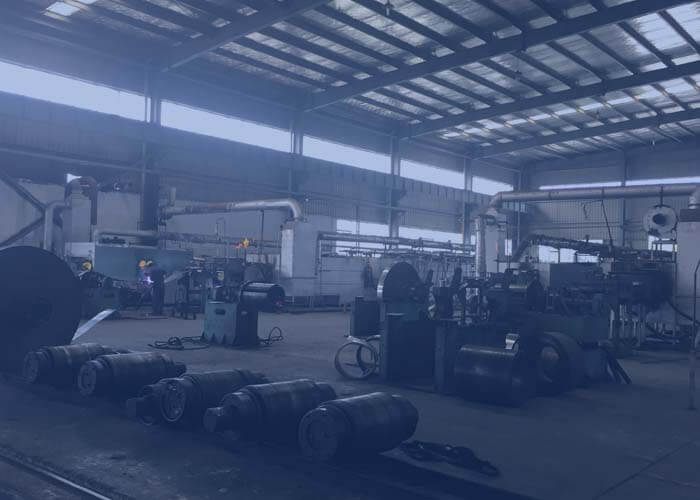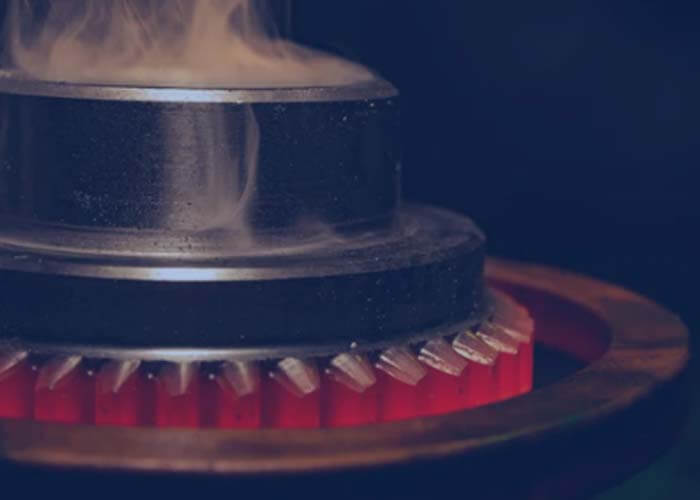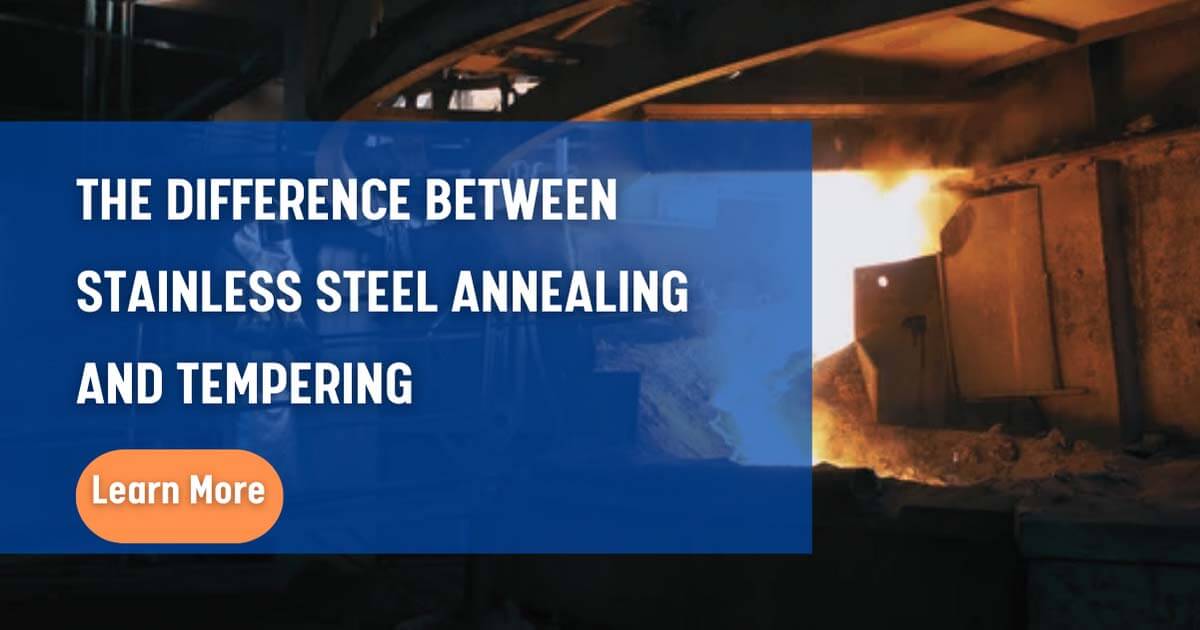Tempering and annealing are both heat treatment processes that can alter the physical and chemical properties of stainless steel, preparing it for the next manufacturing steps.
The difference between these two processes lies in temperature and cooling rate, with tempering occurring at lower temperatures but with a faster cooling time.
Both heat treatments are used for treating stainless steel, although annealing produces a softer, more easily workable steel, while tempering produces steel with lower brittleness, widely used in construction and industrial applications.
If you want to learn more about the difference between annealing and tempering, this article is very helpful for you.
Let’s keep reading.
What is the stainless steel annealing process?

Annealing involves heating stainless steel to a specified temperature and then cooling the material slowly and in a controlled manner. The stainless steel is placed inside an annealing furnace, which is large enough to allow air to circulate around the workpiece.
The metal is heated to a temperature at which recrystallization can occur, which repairs any defects caused by deformation or work hardening.
Once the metal has been held at the desired heat for a fixed period of time, it is cooled very slowly to room temperature.
The slow cooling rate maximizes softness and produces a fine microstructure.
This can be achieved by simply turning off the oven and allowing the metal to cool naturally inside or by immersing the heated material in sand, ashes, or other low-conductivity substances.
Annealing can be divided into three stages:
- Recovery: The recovery stage involves heating the stainless steel to relax the internal structure of the material.
- Recrystallization: As the temperature increases, the metal reaches a point where recrystallization can occur, allowing new grains to develop within the metal’s internal structure without forming stress. The temperature for this stage needs to be above the recrystallization temperature of stainless steel but below its melting point.
- Grain Growth: Controlled cooling helps develop the grains formed during the recrystallization process, resulting in a more ductile and lower hardness material.
Applications of annealing:
Annealing is primarily used to reduce the hardness and increase the ductility of stainless steel, but it can also be employed to improve conductivity.
This process softens the metal enough to enable cold working, enhancing workability and restoring ductility.
This is crucial for various applications, as cold working without annealing can lead to cracking.
The annealing process releases mechanical stresses generated by machining or grinding, allowing the metal to be further processed.
This technique is commonly used with stainless steel, but it can also be applied to metals like aluminum, brass, and copper.
What is the stainless steel tempering process?

Tempering is a process of precisely heating stainless steel below its critical temperature. This is typically carried out in air, vacuum, or inert atmosphere, with the exact temperature varying based on the desired reduction in hardness.
Higher temperatures decrease hardness and increase elasticity and plasticity, but they lead to lower yield strength and tensile strength. Lower temperatures maintain much of the hardness while reducing brittleness.
Tempering requires a gradual heating of the metal to prevent cracking, and once the desired temperature is reached, it is held for a fixed period of time.
A rough guideline is one hour per inch of thickness, although this depends on the type of metal being treated. The heat relieves internal stresses in the metal, followed by rapid cooling in air.
By assessing the colors appearing on the surface of the tempered steel, one can visually understand the effects of tempering on the steel. The color ranges from pale yellow to varying shades of blue, depending on factors like carbon contact. These colors allow an evaluation of the final performance of the steel.
Applications of tempering:
Tempering is used to enhance the toughness of stainless steel. It is typically done after hardening to reduce excessive hardness.
While untempered steel is very hard, it is often too brittle for most industrial applications.
Tempering can alter ductility, hardness, strength, structural stability, and toughness.
Differences Between Annealing Stainless Steel and Tempering Stainless Steel:
While both processes involve heat treatment, they follow different rules to yield distinct outcomes for specific purposes.
Tempered stainless steel is used in applications where strength, toughness, and elasticity are crucial. This includes large-scale construction projects, industrial machinery, and automotive transmission systems. Tempering makes these applications possible and reduces any associated risks.
Annealing produces softer stainless steel materials, suitable for products that don’t need to withstand high levels of pressure. This includes many household items and other everyday products.
Conclusion
As mentioned earlier, in HZW’s situation, the hardening process typically involves cold rolling rather than heat treatment of the material.
Conversely, if a medical component necessitates a deep drawing process, it is advisable to subject it to an annealing procedure prior to shipment.
The stress relief achieved through annealing (also known as soft annealing) renders the material more malleable following the rigorous cold rolling hardening process.
Both tempering and annealing hold significance as heating techniques within the stainless steel strips industry, offering valuable insights into the material’s strength and hardness characteristics.












